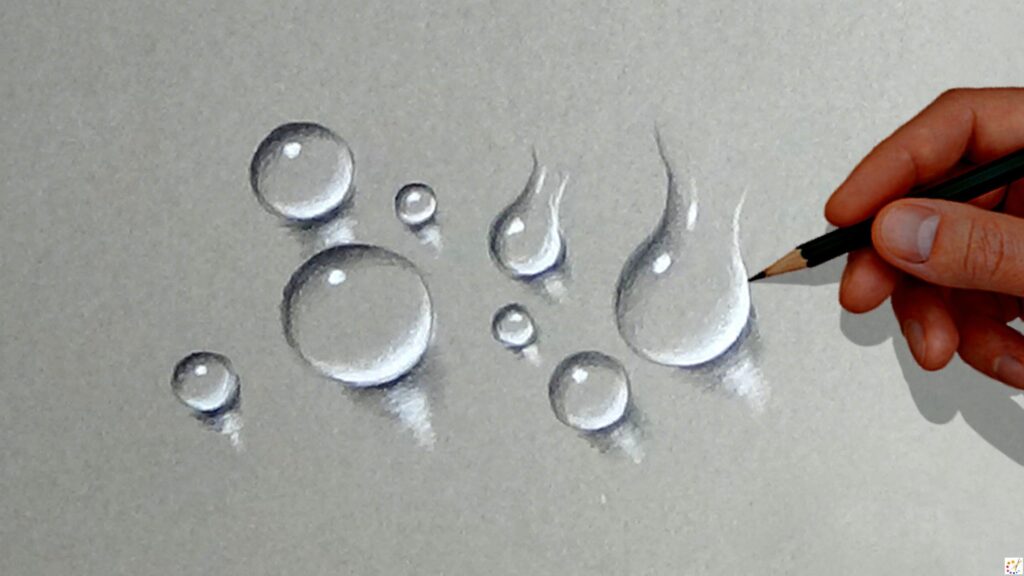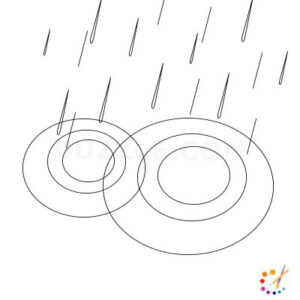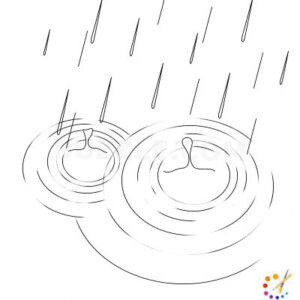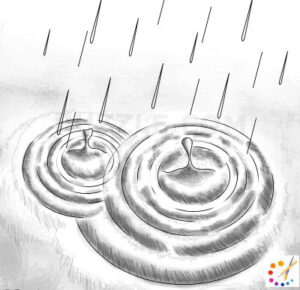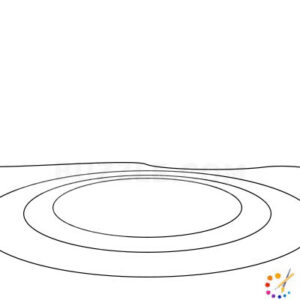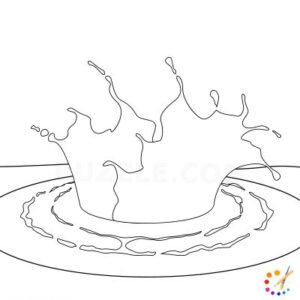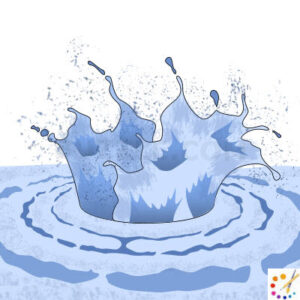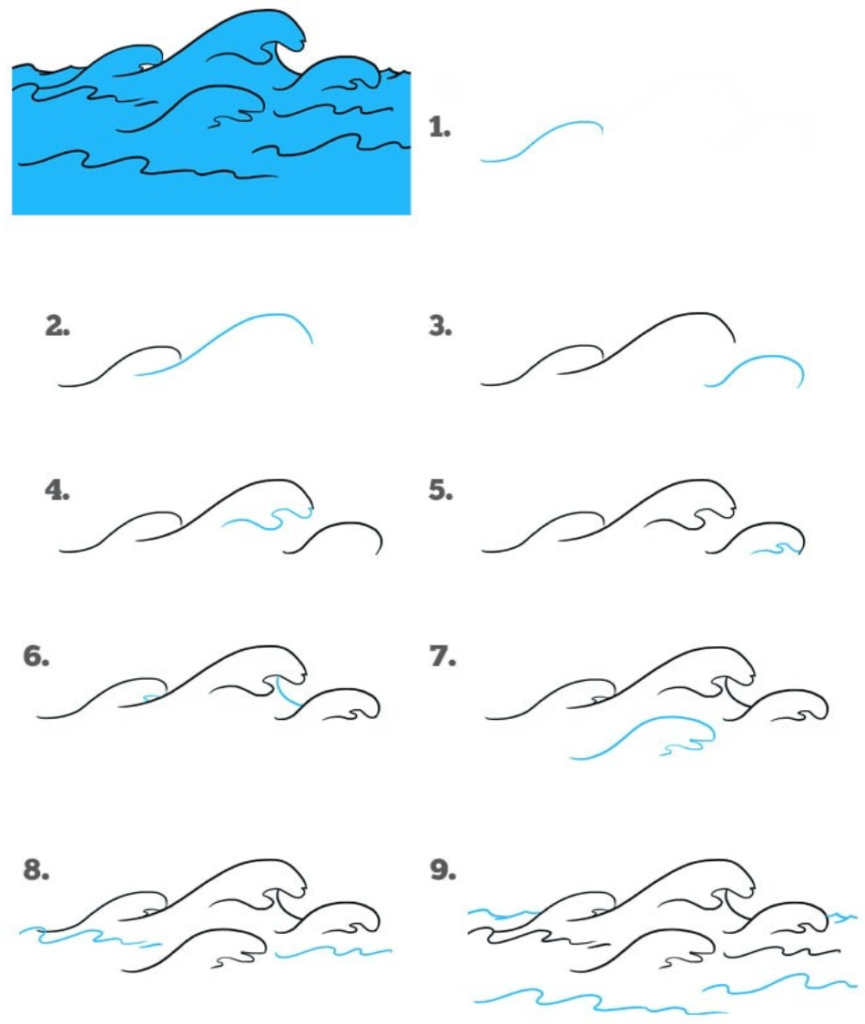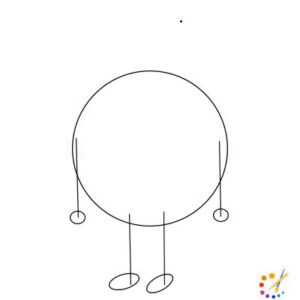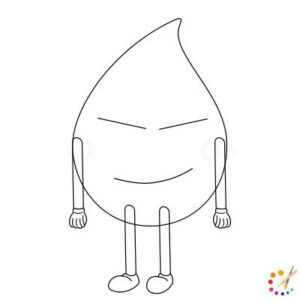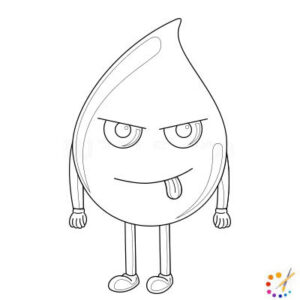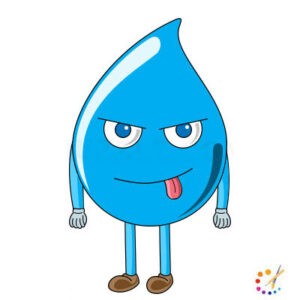We are here with a tutorial on how to draw water to enhance the creativity of your mind and drawing skills. As we all know water is a flowing element that doesn’t have any shape and size. Thus drawing water is totally up to your creativity, observation, and attention. How water waves, splashes, ripples, and water drops form is natural and a matter of observation. While learning this water drawing tutorial be present with your experience and try to put it into your sheet paper. In the same manner, coloring water is also an art as water is considered colorless but absorbs the color of the surrounding.
How to draw falling water and forming splash:
Step 1: Draw 2 ovals overlapping each other and random small lines above that.
Step 2: Convert the lines in water droplets as delineated below and draw many more circles inside it.
Step 3: In the middle of the circle draw a drop coming out from it and draw small lines around the circle.
Step 4: Shade the drawing using the hatching technique, shade darker on the outer circle.
How to draw Splash with ripples:
Step 1: Draw oval rounds in the way they are adjacent to each other in one place. Draw a simple little tilted line on the top.
Step 2: In this step draw a splash coming out from the inner circle. For this draw a random shape using many small curved lines and another same shape at the back of the first one. Around this splash convert the circle into many small curved shapes, refer to images given below.
Step 3: Draw the small splashes randomly in the bigger splash using small curved lines forming pointed ends. Draw a big water ripple using the outermost circle drawn in the first step. Draw a few water droplets randomly coming out from the splash.
Step 4: Color the water using a light and dark shades of blue highlighting the water splash.
How to draw water wave:
Start to draw wave with a curve, a flattened wavy curve which is further followed by a few more same types of curved lines, refer the images for assistance. Then finish these wavy lines from their bottom and turn them inwardly. Do the same pattern for each individual wave. Start the second step from below the first step of waves draw another series of wavy lines as they are coming from the same origin. It’s easy to draw waves only you have to keep in mind that all waves must be unique in shape and size only it will look realistic. Draw a few single wavy lines randomly for the base of water.
How to draw Cartoon Water Drop:
Step 1: Draw a circle at the starting of the drawing and 4 lines falling down from it. 2 lines from and 2 lines from the side of the circle. Each line has an oval attached to it at the end.
Step 2: In this step extend the lines from both sides of the circle towards the upper side joining at the top and forming a cone. Double all the 4 lines drawn in the first step with a curved closed end. At the bottom of the 2 sidelines draw hands as depicted below, and at the end of 2 lines drawn in the bottom of the circle draw shoes. Draw 2 lines for eye guidelines and a curve for the mouth.
Step 3: Below the eye, guideline draw a curve and a small curve inside it and a small projection on the left side of the mouth for tongue. On the side of from draw a mark to highlight during coloring it.
Step 4: Color this water drop with blue color and tongue with red, use brown for shoes, and highlight it with white.

Skilled teacher, knowledgeable in and in adapting state content standards to individual needs in
Elementary-6th grade classrooms. Utilizes instructional materials, technology, and teaching methods to
engage students in effective learning opportunities in individual, small group, and whole-group settings to
maximize instructional time. Differentiates instruction for ELLs while exposing them to rigorous content,
with a focus on literacy skills in all subject areas. Establishes and maintains appropriate standards of
behavior in an inclusive and respectful environment for students from all socio-economic and cultural
backgrounds. Develops lesson plans using Backwards Planning Method to align content standards and
assessments with effective learning activities. Communicates and collaborates effectively with staff and
parents, and creates a safe and positive learning environment for students. Has taught in both in-person
and virtual environments. Professional Communicator with 20+ years of experience.

